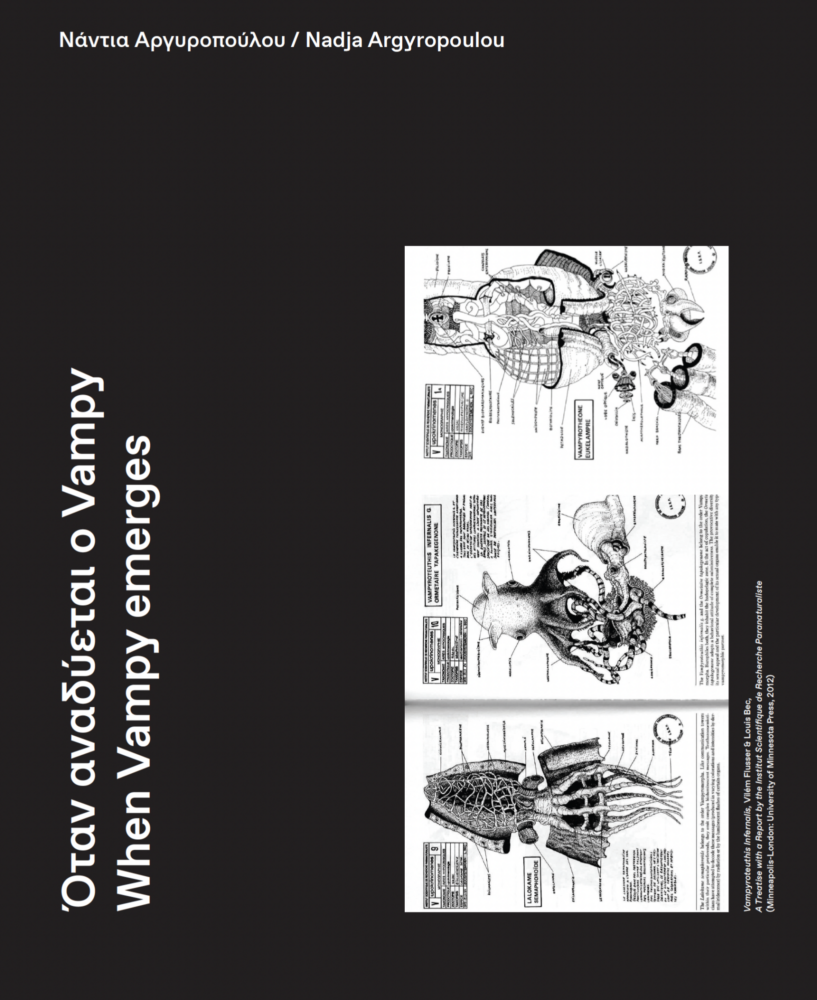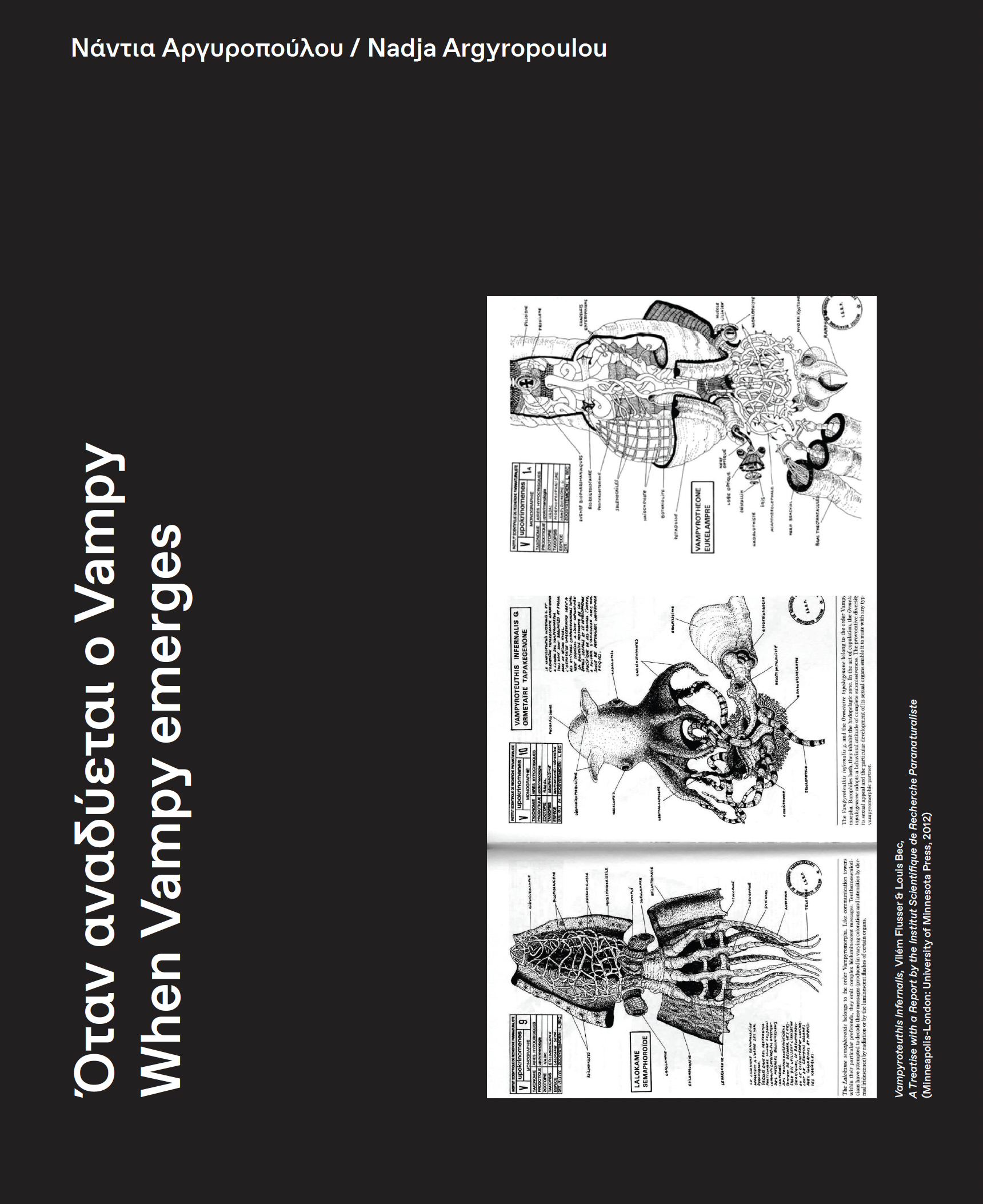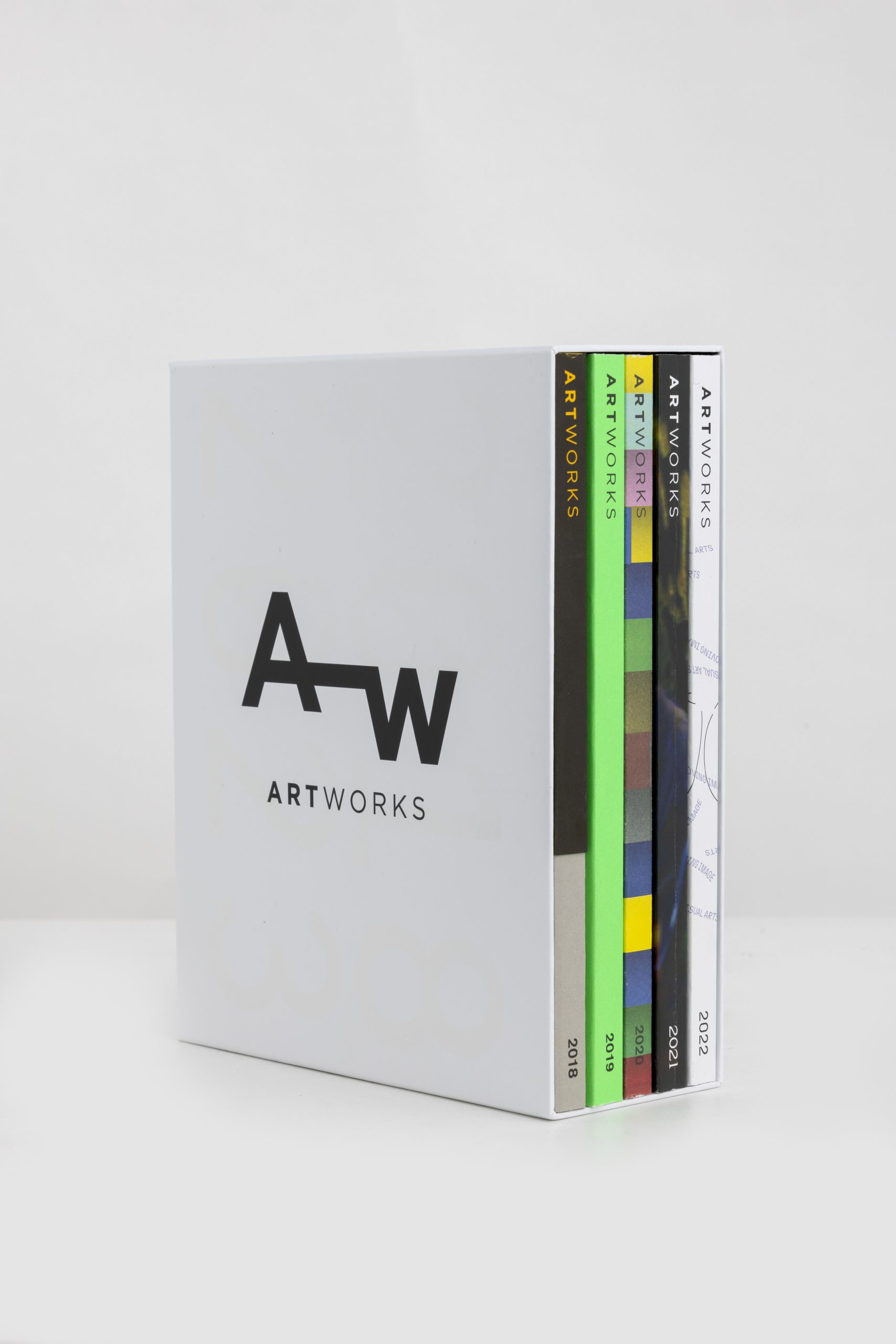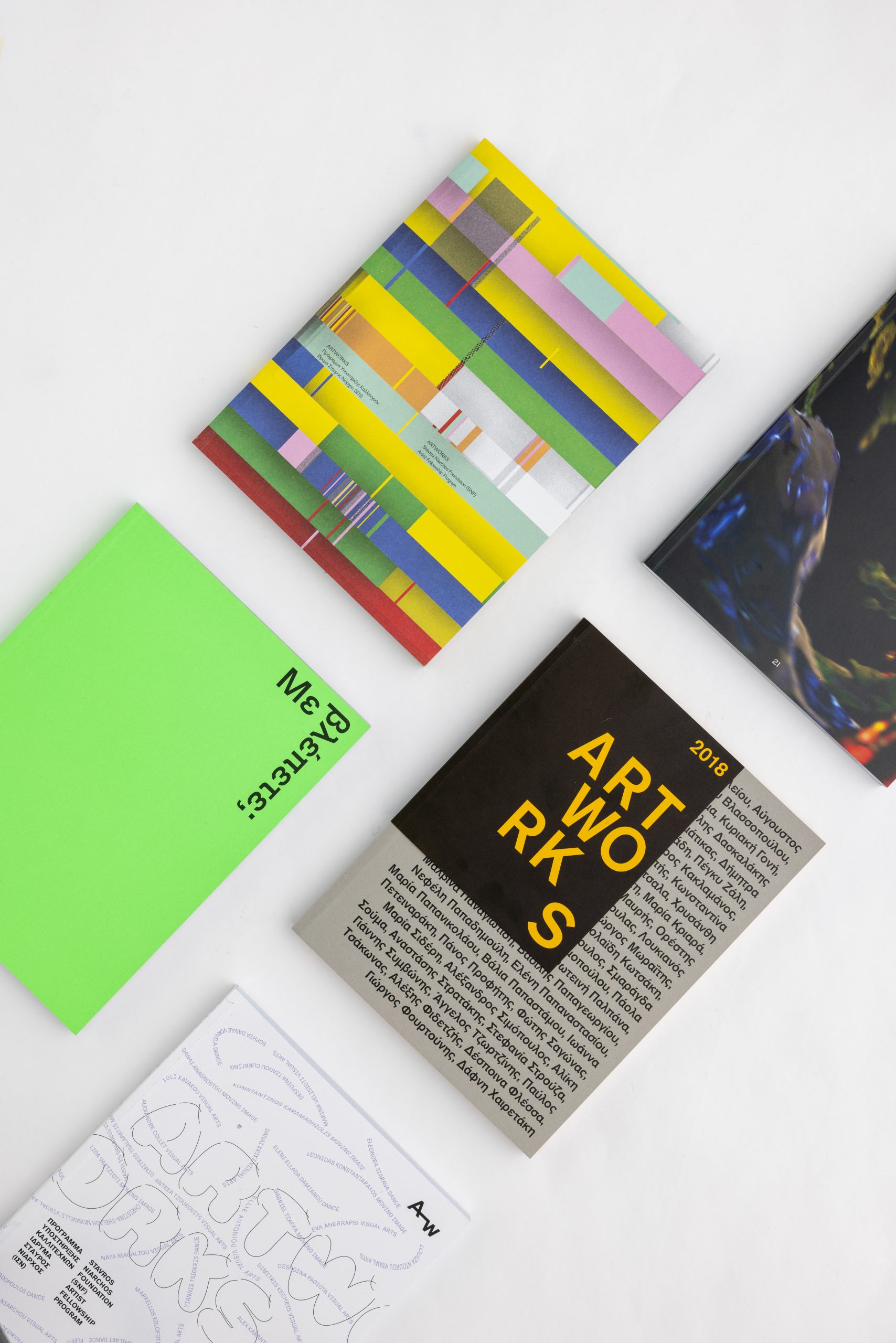WHEN VAMPY EMERGES

I seek to read newspapers, as if I were a mollusk.
VF ¹
Non-human intelligence is something I think about a lot. Especially, when in need to consider human invention and communication.
During the past few years, as concerns about “singularity” and the “simulation argument” dawned, artificial intelligence entered the pluriverse of beyond-the-human alternatives
that have profoundly unsettled human certainties and affected the arts.
Coronavirus Covid-19 pandemic came to suggest an utterly unpredictable future that is not outside, ahead, imminent or delayed but, one that is inside, always, a non-representable “already” that is also a “not yet”. As the ever elusive, entropic, texture of reality has been magnified down to the microscopic and the unseen, life’s social structures were reduced and re-inscribed through algorithmic modelling; things natural and things cultural were violently conflated into an undifferentiated hype (the virus and the viral, transmission and transition), the world’s panic revealed the extent of inequalities and even reinforced them.
Mediation acquired a different conceptual edge, following the accelerated reign of the screen, the triumph of disaster capitalism and the rise of new techno-fixes, induced by the promise of blockchain technology. The explosive proliferation of our data trails within the pandemic already leads to a new and prolonged harvesting season for informational Biopolitics.
Within this persistent, all-encompassing unknown everyday life engaged with performative speculation, previously exercised almost exclusively through art making. How to think the differences and nuances that make the truth and anticipate challenges? How to invent a new affective language for the indeterminacy at the core of knowledge? How to free the world from the virus of the capitalist imaginary? How to practice imagination and refusal? How to engage with the trouble in Isabelle Stengers’ question: “What is it? this life?”²
The question caught me half way through my encounters with the work of the artists involved in the second cycle of the Stavros Niarchos Foundation (SNF) Artist Fellowship Program and its mentorship component. It also caught up with the weird insights and uneasy premonitions, which haunted their works. Together we struggled to fathom the déjà-vu of this end-of-the-game moment.
Their art, digitally generated more-than-human worlds and hybrid, wild material mutations (sculptures, photographic prints, books, installations, films, animations, performances, writings, sounds) revealed a daring engagement with the vertigo of change, various forms of odd kinships, precarious circumstances, alternative climates, intertwined, conflictual images of love and loss, grief and joy, destruction and the yearning for reparation. Much of the art (of every kind) that is worth anything has been trying for some time now to capture a paradigm shift, the sensual language to express it, as well as the rifts and glitches, the noise and dirty data that disrupt and confuse various emerging extractivisms and the “Utopia of Rules”³.
While our meeting habits became almost exclusively digital and public life, domesticated, screen-shared, this sense of “otherness” leaked to the everyday with an almost confounding ease: it became an alarming and at the same time debilitating, common sense. Within the fear-augmented immateriality of our “democracy of misunderstandings”, frustrated rationalists fight (again) against frustrated irrationalists, making the comple-mentarity of both mentalities apparent and the need to acknowledge a non-sublimated “uncommons”, urgent; “uncommons”, that should be perceived as “the heterogenous grounds where negotiations take place within commons that would be a continuous achievement, an event whose vocation is not to be final, because it remembers that the uncommons is its constant starting point”⁴.
I entered the meandering ceremonies of research for such a point via the aforementioned encounters with fellow artists and Vampy, aka Vampyroteuthis Infernalis. Vilém Flusser and Louis Bec’s mysterious friend, the quite elusive deep-sea vampire squid, had evoked an obscure and utterly fascinating, biophilosophical, illustrated treatise5 that reads like an atlas; a browsing system with the ability to deliver secrets we did not even know that we have been looking for, a story of transknowledges, that foretells a stereoscopic reading of reality, an uncommoning that could suggest a possible life with technology.
For almost a decade (in the 1980’s) the Czech media philosopher and pioneer of communicological processes sought “to intuit the vertebrate, mammalian and primate foundation” of his own behaviour and thus, contest human mechanical thought and existing parameters of evolution; he managed to dive into the cybernetic (informative) thought and sensorial communication of a unique member of the Octopoda order and come out with a subject-object interlinkage, a counter-vision of the nature-culture blend that permits science and art to play together in the ecological commons of creative worldmaking.
By inventing this fable, “simultaneously scientifically exact and mad fantasy”, as he admits in a 1981 letter to Dora Ferreira da Silva, by exploring the not-so-alien-to-us nature of Vampyroteuthis (both “exposed and threatened pseudopods of life, forced to think”) Flusser aimed to attain a non-transcendent distance from the human condition, enough for him to explore the potential of a sensorium outside of language, to be able to look through eyes who are quite similar and yet radically different from the human, to imagine the world as something that we, ourselves project and can/should therefore change together, instead of succumbing to chance, fate or belief to some/any hyper-agency.
Developing a thorough and years-long interaction with Vampy’s abysmal and largely yet-unknown existence, Flusser, in a “cephalopodic” dialogue with Louis Bec, demonstrated how human existence was problematized by the vampyroteuthian one and vice-versa. He focused critically on the “programmatic” view of evolution and delved into how Vampy senses the world orgiastically, (literally “grasping” it via an extra sensory organ, a third penis) and creates it by experiencing and altering not objects but the other Vampyroteuthis. For the visionary philosopher of a meta-theory of communication, curator and eventually artist, this is a form of art that can acquire the enduring profundity of gametes and express it in the malleability of pixels. It is also a form of creation that can become totalitarian, deceitful, spiteful.
Taking into consideration what Flusser was writing at the end of the 20th century, at the birth point of media culture and relational aesthetics, and being aware that the rise of digital economy on platform capitalism has used our “being-in-relation”, as a resource to be extracted and abused, we can start by accepting that amidst our evolving adventure with the digital sphere, we must explore our options digitally; in other words, we must befriend the beast by taking our cue from the ceremonies of neglected cosmologies and their rigorous life methodologies which make space for chance. We must exorcise Vampyroteuthis in order to make it emerge alive; we must walk the “acrobatic tightropewalk between insisting on intellect and surrendering to emotion”6.
We can then appreciate Flusser’s attempt to detect the digital structure in nature, as a movement to encourage humanity to use digital technology in cooperation with natural laws and not against them, as an attempt towards the reconciliation of nature’s entropy and culture’s negentropy under human responsibility and art’s decisive input. In an ironic twist that he would certainly appreciate, we can see in the positive parallel that he made between the generative potency of natural forces and the information processing capabilities of digital technology, the inverted image of a crisis that could possibly match and even exceed the environmental disaster, if we continue to overlook life’s complexity and many entanglements. Flusser was all too aware of the social implications involved in his utopian view of reality as a “foaming ocean” of possibilities that can be best navigated by daring intention and fearless technological invention. He cautioned us that in order to decipher “techno-imagination”, we have to hack the new media channels of communication (by détournement) and make completely new realities happen. Artists must always be positioned opposite of the apparatuses (and reverse the fact that these are being made easy-to-use, yet difficult to understand); artists must organize in dialogical and non-hierarchical groups of acute response-ability and be in charge of preventing these new realities from becoming determining conditions.
His Vampy fable is far more than a poetic device, the practice that puts his theory to the test, a fantasia essata that engages with exquisite strangeness without explaining it away and betters it by relentlessly shifting its perspectives; a fictitious science that creates a direct disclosure of reality’s unsettled past and tremendous potential and achieves a quirky re-connection of art and life. The Vampy fable feels like a trickster’s trick, the “subterfuge” that highlights all kinds of natural and social mysteries and requires inordinate skill, inordinate technique, inordinate empathy with reality7.
Whatever course one chooses to take in these matters – and there are many, emergent and submergent, digital, material, chthonic, aquatic or other – it is Flusser’s fabulous complicity with the reality of the vampire squid that is “meeting the universe halfway” (in Karen Barad’s worlding image)8 and makes a telling example of how “the path is made by walking” into the wild. Into the critical practice of knowing what has been ignored; into the practice of fugitive planning vis-à-vis normalization and institutionalization, of decolonizing nature and challenging cultural structures, of “creating thinking-feeling places of radical sensibility”9 and powerful anarchic alliances for justice; into the ongoing practice of staying with the trouble.

1Vilém Flusser, letter to Dora Ferreira da Silva, 9/6/1981. Published in Vilém Flusser, Vampyroteuthis Infernalis (edited by R.M.Novaes, New York-Dresden: Atropos Press, 2011) p. 1422 https://www.agirparlaculture.be/entretien-avec-isabelle-stengers-se-liberer-de-limaginaire-capitaliste/
3 Graeber, D. Τhe Utopia of Rules, https://en.wikipedia.org/wiki/The_Utopia_of_Rules
4 Blaser, Μ. and Marisol de la Cadena (2018). Introduction: Pluriverse; Proposal for a World of Many Worlds, σ.19, https://www.dukeupress.edu/a-world-of-many-worlds
5 Flusser, V. και Bec, L. (2012) Vampyroteuthis Infernalis: A Treatise, with a Report by the Institut Scientifique de Recherche Paranaturaliste, αγγλική μετάφραση: Valentine A.
Pakis, Minneapolis: University of Minnesota Press.
6 Vilém Flusser, Atropos Press, ibid p. 122
7 Taussig, M. (1998) “Viscerality, Faith and Skepticism: Another Theory of Magic”. Journal of Ethnographic Theory, 6, p. 482.
8 Barad, Κ. (2007) Meeting the Universe Halfway: Quantum Physics and the Entanglement of matter and meaning, Durham and London: Duke University Press
9 Demos, T.J. (2020) Beyond the World’s End, Arts of living at the crossing, Durham: Duke University Press, https://www.dukeupress.edu/beyond-the-worlds-end
*Nadja Argyropoulou is an independent curator, art historian and art writer. Nadja was part of the ARTWORKS Visual Arts Selection Committee 2019 along with Iliana Fokianaki, Charis Kanellopoulou, Nikos Navridis and Nayia Yiakoumaki.
**Τhis text was part of the 2nd publication of ARTWORKS that reflects the SNF Artist Fellowship Program 2019-2020.


